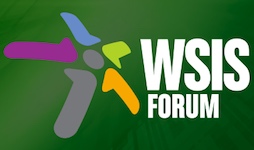Information and communication infrastructure: Building the foundation for an Inclusive Information society
15 Jun 2017 16:30h - 18:15h
Event report
[Read more session reports from WSIS Forum 2017]
This session, moderated by Mr István Bozsóki (Head of SBD Division BDT/IEE, ITU) discussed the latest and most affordable technologies, innovative ways for promoting ICT development, and expected challenges that must be overcome in order to achieve the sustainable development goals (SDGs). In particular, specific attention was given to the problem of how to connect the unconnected. The speakers provided examples of the latest technologies and best practices.
Mr Daniel Onyango Obam (National Communications Secretariat, Kenya) described the ecosystem of the Kenyan broadband strategy. Obam mentioned several cases that support ICT development in Kenya and some key aspects that are essential for developing countries, such as capacity building in schools, secure and available infrastructure, digitalisation of government content, and cheap, tax-free devices. Obam concluded by highlighting the need for government transparency in spectrum allocation and availability.
Ms Julia Jasinska (Head of international relations and trade policy, Nokia) briefed the audience about how Nokia supports SDGs, by mentioning activities in the areas of healthcare, smart cities, transportation, and climate change. In conclusion, Jasinska warned against a second digital divide that could be caused by the absence of the newest technologies in developing countries. Technologies like the Internet of Things (IoT), cloud computing, analytics, and artificial intelligence can help make our lives easier, and it is important to make sure these are present not only in the most developed countries. Jasinska mentioned three main points that will need an enhancement in order to avoid the next digital divide. These include: international partnerships between public and private sectors and partnership across sectors; policies for digitalisation; and technology.
Marcello Lombardo (Project Manager, European Broadcasting Union (EBU)) described the role of the EBU, and focused his presentation on the four aspects of broadcasting: media consumption statistics, the evolution of digital terrestrial television, the growth of digital audio broadcasting, and collaboration in future distribution of content with a particular focus on 5G.
Mr Gyu Myoung Lee (Senior Lecturer, Liverpool John Moores University) dedicated his presentation to infrastructures for IoT, smart cities, and communities.
The following speaker, Ms Caroline Leclerc (President, Rockworld International), addressed the problem of how to build an inclusive information society by focusing on technological, economical, and policy aspects. As part of the technical aspect, Leclerc mentioned telecom network infrastructures and government e-infrastructure platforms. In the economical aspect, she brought up examples of investment, jobs revenue, and capacity building. The digital divide and technology convergence in the work of broadband infrastructure interoperability were presented in the policy aspect.
Mr Karim Lakhani (CEO, Advintive) shared with the audience a facet of his company that provides communication solutions in remote and rural areas. Lakhani mentioned differences and diverse challenges between urban and rural areas when it comes to the deployment of wireless connectivity. He provided a comparison between two technologies: LTE and DOCSIS 3.0/3.1. In his presentation, Lakhani described the advantages of UHF (Ultra High Frequency) band in remote areas, and urged countries to repurpose use of this band in such places. So far only regulators in Canada and the United States have repurposed the use of frequencies in the UHF band.
During the Q&A, the moderator asked panellists to provide their opinion on how action line C2 can help implement the SDGs. The panellists stressed the importance of indicators supporting decision making, plans, and strategies driven by governments and supported by companies, and the idea to acknowledge that the deployment of ICT infrastructure is a public service. The members of the audience requested more details on the use of the UHF band, and discussed the issue of infrastructure-sharing among different service providers.
by Radek Bejdak
Related topics
Related event

